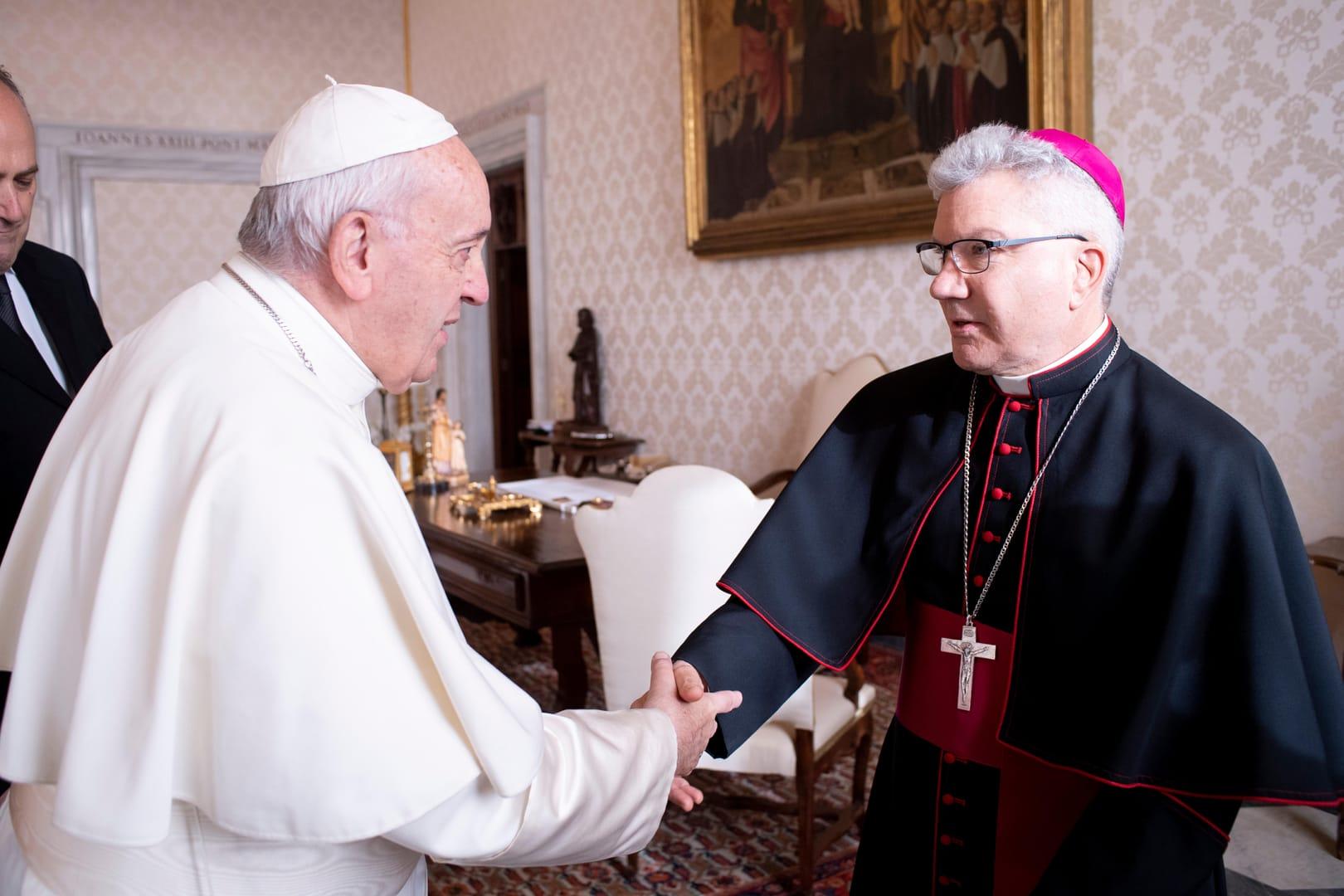NEW YORK – When Bishop Jeffrey Monforton arrived to the Diocese of Steubenville in 2012 some people asked him if he would suppress the diocese amid a declining Catholic and general population in southeastern Ohio. Ten years later, he’s now seeking a merger with the Diocese of Columbus.
“We’ve been able to make it happen, but that’s not going to be able to continue. Our numbers keep declining to a point of 10 years from now, can we even exist,” Monforton told Crux. “Is that fair to the people of God when we have to have less people at our offices, support staff, and then, of course, that compromises evangelization and our ability to reach out to people.”
Monforton emphasized that the merger isn’t a done deal yet. Currently, the Diocese of Steubenville is home to fewer than 40,000 Catholics across 13 southeastern Ohio counties.
The next immediate step in the process is sending out a survey to the Diocese of Steubenville faithful to get their perspectives on the matter, and give them a “chance to vent,” Monforton said. He will present those results at next month’s United States Conference of Catholic Bishops’ general assembly. The nation’s bishops will then vote, and those results will go to Pope Francis who makes the final decision.
Monforton explained that the possibility of a merger became apparent about a year and a half ago when the Holy See expressed concern over the declining numbers. The two sides agreed that something had to be done, and that merging dioceses looked like the best option.
Then, about a year ago, after the Holy See meeting, the Ohio bishops met and unanimously voted that a Diocese of Steubenville and Diocese of Columbus merger was the best path forward.
Bishop Robert Brennan, who was the Columbus bishop at the time of the vote before being installed as the Brooklyn bishop last November, was a part of that vote. Current Columbus bishop Earl Fernandes, who was installed in May, declined to comment on the merger until after the USCCB general assembly.
“Until after the November meeting of the USCCB, it is useless to speculate or worry; rather, let us pray that the Lord shows us the path forward,” Fernandes said.
The other Ohio bishops declined a Crux request for comment on the situation.
Central to Monforton’s position are statistics on the priests in the diocese and number of parishioners. With priests, the bishop is looking at their ages. Six diocesan priests are 70 or older, 12 are 60-69, and five are 50-59. Four priests are 40-49, seven are 30-39, and two are 20-29. That means 23 priests are over the age of 50, whereas 13 are 49 and younger.
With the number of parishioners, Monforton said the diocese would fall below 25,000 total Catholics in 10 years. Regular Sunday Mass attendance has dipped from 24,729 in 1990 down to 13,702 in 2019, an approximate 45 percent loss in parishioners. Since 1990, each of the four deaneries in the diocese have had at least a 34 percent decrease in Mass attendance, with the southern part of the diocese having lost 52 percent.
“Those numbers I’ve been sharing with the Holy See, and if I was going to be told that you’re going in the right direction, but you can still be sustainable I would’ve heard that by now,” Monforton said.
The Diocese of Columbus serves about 275,000 Catholics across more than 20 counties. Monforton noted that it makes sense to merge with Columbus because the Diocese of Steubenville was originally broken off from there, adding that it would be “rough” for the diocese’s priests if it was split between the Dioceses of Columbus and Youngstown to the north.
The bishop said the benefit of the merger is resources.
“More resources. More personnel. It’s able to absorb the impacts of the economic downturn much more than us,” Monforton said. “We are basically living with rubbing two nickels together. Our unrestricted funds are extremely low. Columbus itself, with more people, can provide more resources for the Diocese of Steubenville.”
Diocese mergers are rare. The last U.S. diocese merger was in 2020, when the Diocese of Juneau, Alaska, was merged with the Archdiocese of Anchorage to create the Archdiocese of Anchorage-Juneau. The last merger before that was in 1956, when the Dioceses of Kansas City and Saint Joseph merged to create the Diocese of Kansas City-St. Joseph.
Monforton said it’s something he expects will happen more going forward.
“I think it’s going to become more frequent,” he said. “Not to play the prophet here, but we see the growth areas in the United States, and that’s the South and the Southwest, and in the Midwest as well as the Northeast we see a lot of decline, and that will continue.”
As for Steubenville, Monforton said his understanding of the process is that if the merger were to happen Fernandes would be the bishop of the larger diocese because Steubenville is the one being absorbed. Beyond that, he said “that’s the Holy Father’s decision when it comes to me.” How the merge is manifested – the name of the diocese, number of chanceries, etc. – have yet to be discussed.
“After our November meeting I do not have any fixed timeline after that. That’s all in the Holy See’s hands,” Monforton said. “In the meantime, I remain bishop here in Steubenville and we’ve got hearts and souls to save.”
Follow John Lavenburg on Twitter: @johnlavenburg















